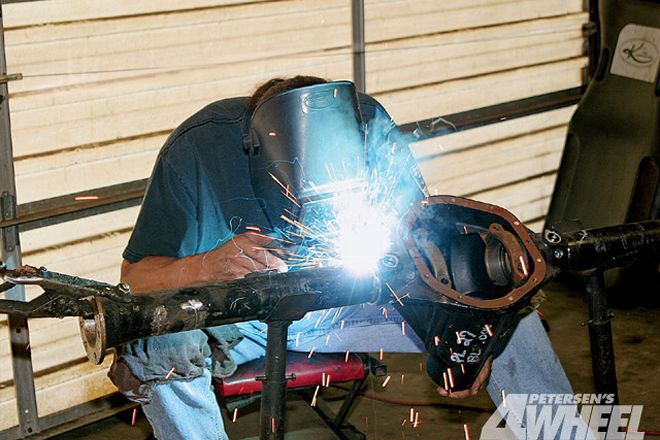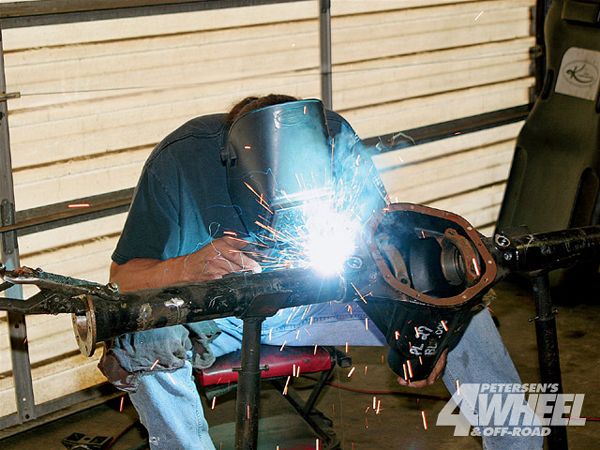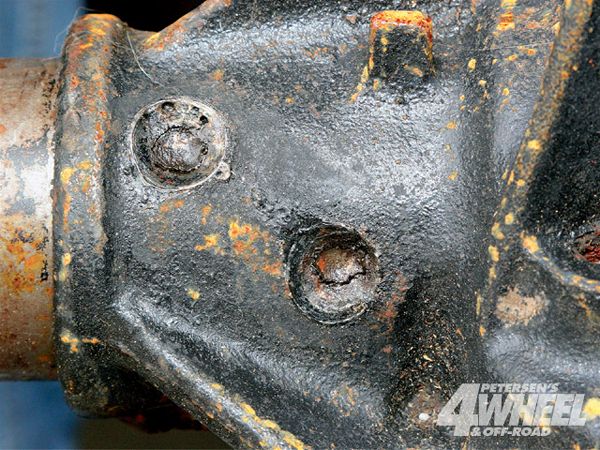

Well, you ruined that housing-you can't weld cast to mild steel." Jay Prosche-Jensen of Ultimate Driveline has heard that from "experts" for 30 years. Being the mild-mannered guy he is, his reply is always the same: "That's what everyone keeps saying, but I've never had one fail, and I've built thousands of rearends this way."
If you've spent any time around dirt and Danas, 12-bolts, or Ford 8.8s, you've learned these housings can be weak where the tubes press into the cast center. Over time it's common for the plug welds that hold those tubes in place to fail. At the very least, they'll leak after flexing from trail use, high mileage, or abuse on the street. At worst, they'll outright fail and leave you stranded, as our Dana 44 did.
 1. Most axletubes are pressed into cast centers and secured with a few plug welds. This Dana 44 had six plug welds around each tube, and all were cracked, resulting in 1/16 inch of play where the tube pressed into the center and a whopping 5/16 inch of runout at the wheel bearing. This eventually destroyed the axle splines, spider gears, and internals in the posi, and spun the carrier bearing, which junked the housing.
1. Most axletubes are pressed into cast centers and secured with a few plug welds. This Dana 44 had six plug welds around each tube, and all were cracked, resulting in 1/16 inch of play where the tube pressed into the center and a whopping 5/16 inch of runout at the wheel bearing. This eventually destroyed the axle splines, spider gears, and internals in the posi, and spun the carrier bearing, which junked the housing.
The ultimate fix is to fully weld the tubes to the center housing, but there's some mystery and myth surrounding the process. The problem is welding dissimilar metals; it's not so much their alloy composition as the difference in cooling rates. "When it isn't done right, you'll hear a loud tink! as each weld breaks loose when it's cooling," Prosch-Jensen told us. Since the cast steel housing cools slower than the mild steel tubes, the weld pulls away from one side of the joint.
The accepted solution is to bring the whole assembly up to a given temperature in an oven, make the weld, and then control the cooling rate to keep the weld from pulling away. Prosch-Jensen doesn't have an oven, but he does have a secret weapon. He found a particular MIG wire that allows the molecules to keep "flowing" as the weld cools, allowing the weld to stretch and give. The result is a strong weld with no tink! If you're handy with a MIG, you might be able to do it yourself, though the Esab high-silicon wire is expensive.
Prosch-Jensen custom-builds extreme-duty rearends week in and week out, and still takes the time to swap the spool of wire just for welding tubes to cast housings. You also need to be spectacular at controlling heat buildup and penetration, otherwise you'll warp the housing. Prosch-Jensen built a custom Dana 44 for us, and he's like a machine: When we got the housing back, the axles slid home perfectly. With fresh plug welds, extra-thick-wall tubing, and a full radius weld, this housing is up to whatever abuse we'll give it.





